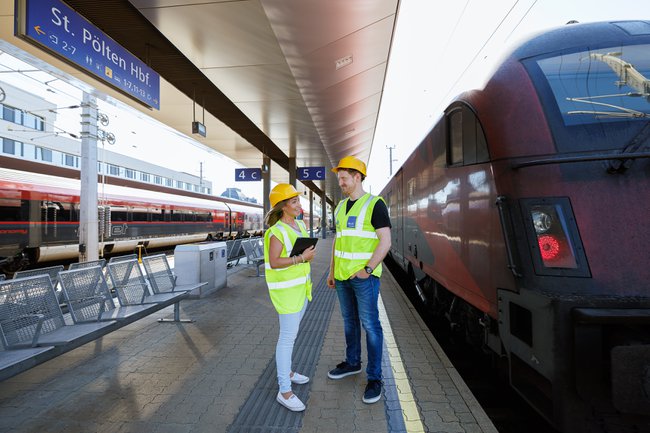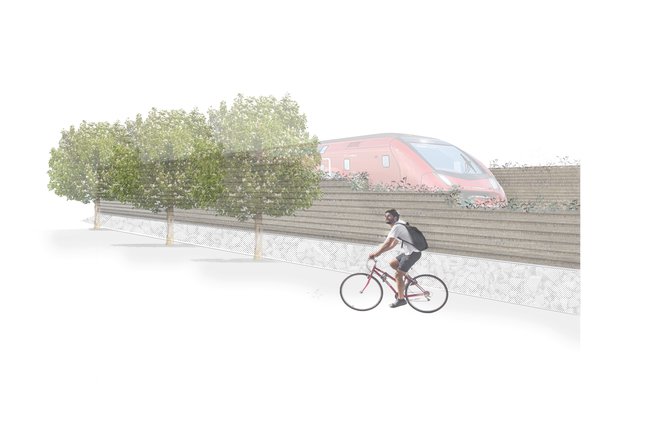Noise Protection Walls Made of Clay
St. Pölten UAS Research Project Examines Use of Clay as Building Material for Railway Noise Barriers

In an exploratory study, the Carl Ritter von Ghega Institute for Integrated Mobility Research at the St. Pölten UAS and the Research Unit History of Architecture and Building Archaeology at TU Wien examined the use of clay as a building material for noise protection walls. The result: Noise barriers made of clay are a sustainable and cost-effective alternative. However, there is still a lot of research to be done until it can be put into actual operation.
Clay: Environmentally Friendly and Reusable
The construction sector contributes significantly to overall CO2 emissions, mainly through building materials such as concrete and steel. In order to reduce these emissions, building materials research is constantly looking for more environmentally friendly alternatives.
This challenge extends to the construction of railway systems, although this sector is usually deemed environmentally friendly in itself.
“For this reason, we have been considering alternative materials to use in construction. Clay is an environmentally friendly, natural material that is reusable and has proven its suitability in construction for thousands of years. For constructions that are exposed to little mechanical stress, such as noise barriers, clay is very promising indeed”, explains project manager Hirut Grossberger from the Carl Ritter von Ghega Institute for Integrated Mobility Research at the St. Pölten UAS.
Excavated Material for Noise Protection
The project team identified and assessed various clay construction techniques for noise protection walls for railroads. When it came to prototype development, the researchers paid attention to keeping the manufacturing process as efficient as possible: The earth excavated in building the railway track was used directly for constructing the noise barriers. In this way, it was possible to shorten transport routes for materials, save resources, and reduce energy consumption and emissions.
 Visualization of a clay noise barrier (Credit: Wolbert Marten/TU Wien)
Visualization of a clay noise barrier (Credit: Wolbert Marten/TU Wien)
Project Results: Clay as a Sustainable Alternative
The researchers of the St. Pölten UAS and TU Wien involved in the exploratory project came to the conclusion that clay is a suitable alternative construction material for noise barriers in technical, railway operational, and legal terms.
“For structural reasons, these noise protection walls have to be considerably broader and heavier than the systems currently in use but they would still fit into the standard track width”, explains Grossberger. “In addition to the environmental advantages, their long life could also make them more cost-effective compared to conventional noise protection walls.”
Open: Behaviour in Actual Operation
However, there is still quite a lot of research work to be done before these systems can actually be applied in railway construction. In particular, the constructions’ behaviour under permanent dynamic duty in real operation is still unknown. For further studies, it is therefore recommended to instal prototypes along railway routes.
“The interdisciplinary collaboration with and early involvement of experts in this domain has led to good results in this exploratory project. We hope to receive funding for a follow-up project to build prototypes and examine further parameters in more detail”, says Hirut Grossberger who is looking forward to potential next steps.
LeWeLaS – Clay as a Building Material for Noise Barriers in the Railway System
The exploratory project, which ran from 19/09/2022 to 18/09/2023, received funding from the Austrian Research Promotion Agency (FFG). Project partners were TU Wien (Research Unit History of Architecture and Building Archaeology) and Netzwerk Lehm.
More information on the project: LeWeLaS – Clay as a Building Material for Noise Barriers in the Railway System
